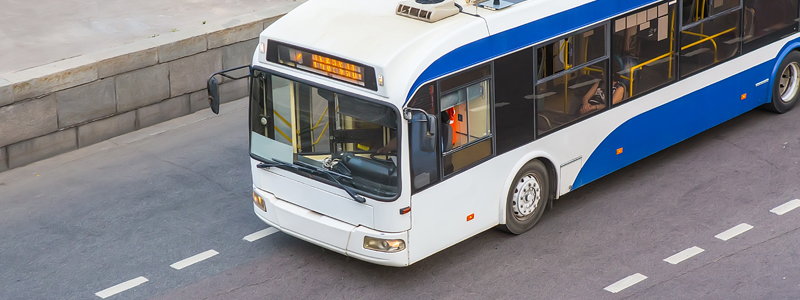Life still rides on transit

Over the years, public transit has earned its reputation for being one of the safest modes of transportation. Yet, COVID-19 has forced many agencies to reduce operations, schedules and services. Plus, many riders feel more at risk of catching the virus and have changed their habits; perhaps for good. Recently the U.S. Senate passed a stimulus bill that includes $25B in emergency relief for transit agencies.
When life eventually returns to normal, public transit needs to be ready for the restart, and steps taken now can help bring back ridership.
Ensure proper cleaning and disinfecting.
Public transit fleets have stepped up cleaning and disinfecting their vehicles, especially high traffic and high touch areas. But different companies have different cleaning protocols. On top of that, in response to new developments, the CDC regularly changes its guidelines regarding how frequently these steps need to be taken.
Even with reduced service, transit drivers still change shifts en route. And, during each shift change, they still need a clear understanding of what’s been cleaned and what’s been done to ensure protocols are followed. Our electronic verified inspection reporting (EVIR®) system is ideal for ensuring proper protocols are followed and that each driver digitally verifies the vehicle was properly cleaned. EVIR an new inspection configuration to streamline the process of following complex, detailed sanitization procedures.
- Comply with the FTA’s safety advisory to execute all routine cleaning and surface disinfection.
- Document which areas are sanitized, at what time, and by who.
- Monitor cleaning routines to standardize methods and maximize efficiency.
- Document the type of disinfectant used.
The sanitization guidelines in this EVIR configuration align with APTA’s best practice standards and can be built into your final plans for PTASP compliance.
Maintain schedules for essential workers.
Different communities have implemented varying levels of social distancing and isolation. Still, transit can’t stop. Your fleet is still responsible for transporting essential people, including:
- health care workers
- first responders
- grocery and pharmacy employees
Plus, patients undergoing critical health care such as cancer treatments and kidney dialysis need reliable public transportation for lifesaving care. They can’t afford to miss an appointment. And not everyone can afford private transportation if the bus is running late.
Reduced service means longer waits.
A few weeks ago, a bus breaking down was inconvenient and costly, but there was usually another one coming soon to pick up riders. Right now, reduced service makes maintaining schedules even more important. Essential workers depend on your fleet to run on time or they have to wait longer to get where they’re needed.
Maintain vehicles to bring back trust.
According to a Northstar public opinion poll across 1,000 people, 48 percent of U.S. respondents feel that riding public transit poses a high health risk due to COVID-19. The poll also shows that many North Americans either stay home to comply with directives or drive themselves when they have to venture outside.
These changes to people’s fundamental habits could have long-lasting effects on public transit; namely, reduced long-term ridership and revenue. With fewer buses on the road and fewer riders on each bus, keeping a reliable fleet on a reliable schedule can go a long way toward making riders more likely to keep using public transit when life eventually returns to normal.
Private transportation serves an essential purpose.
As of March 25, 2020, nine states have declared for-hire transit essential because these agencies provide paratransit and non-emergency medical transportation (NEMT) services. The Transportation Alliance (TTA) is urging more states to do the same.
These private transit services transport:
- patients with severe health issues to get the lifesaving care they need
- low-income citizens living in food deserts to grocery stores and pharmacies
- people who struggle with substance abuse and mental health issues to the care they need
With an ample supply of wheelchair-friendly vehicles that meet DA requirements, private transit also provides services for the disabled community. Shuttles and other larger vehicles already carry healthcare workers to clinics and healthcare facilities, and can accommodate small groups while adhering to distancing guidelines.
With projections and predictions about the virus’s trajectory, ambulance fleets could be overrun. Private transit is an option for transporting patients who are ill but don’t need an ambulance.
Filling in for public transit.
And with public transit schedules reduced, private for-hire transportation can supplement citizens’ unscheduled needs. People need to get where they’re going, but they don’t want to be surrounded by strangers. Many see hiring a driver as less risky, and they’re able to arrange transportation on their schedule.





